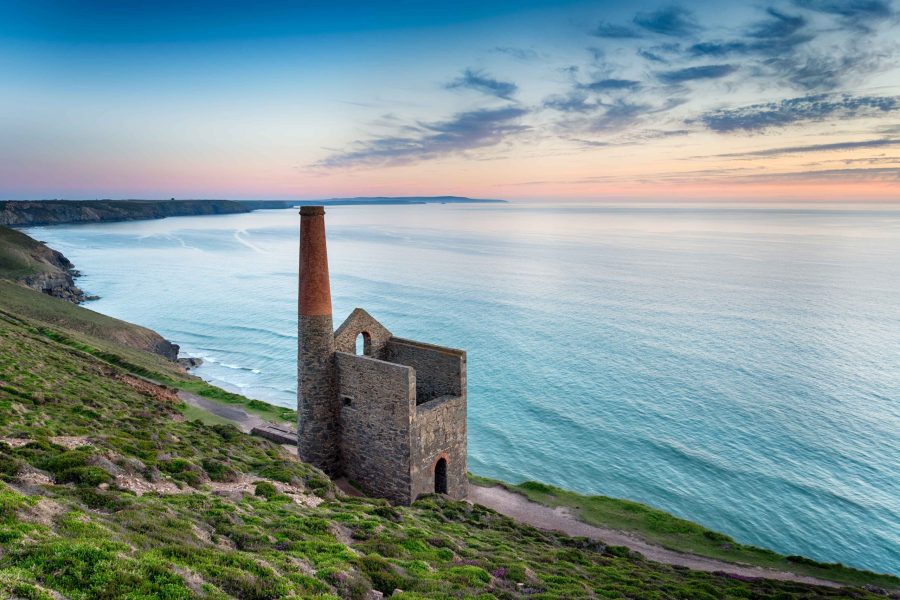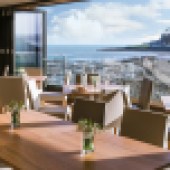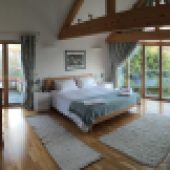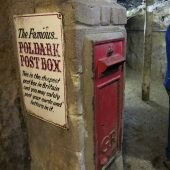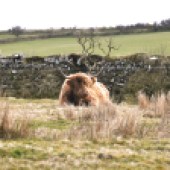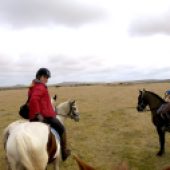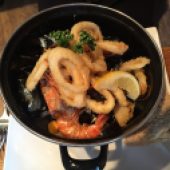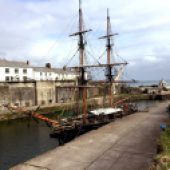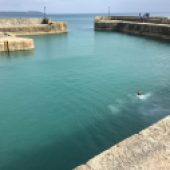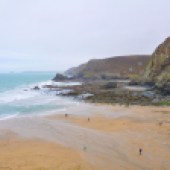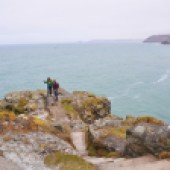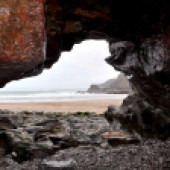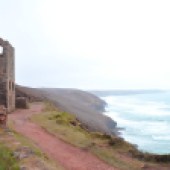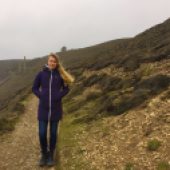Ginny Weeks explores the beautiful Poldark filming locations in Cornwall
With its sparkling beaches, meadow fields and striking cliff tops, the new Poldark TV series is set in the most spectacular of surroundings.
Cornwall has provided most of the backdrop for the series – from market towns to secret coves and original houses – and its wild, romantic charm has captivated the nation.
Growing up in the West Country in the mid-1990s, I started watching Poldark at school. My classmates and I loved getting lost in the world of 18th-century Cornwall with its politics, scandal and old-fashioned way of life.
Fast-forward 20 years and Poldark is back in a brand new light and doing fabulously well (seven million viewers for the launch episode). The cast, led by Aidan Turner as Captain Ross Poldark and Eleanor Tomlinson as Demelza, have received rave reviews and the series has inspired people from all over the world to visit Cornwall once again.
With a second series already confirmed, it looks like Poldark fever is set to continue.
Friday
Poldark Mine, Helston
The Poldark Mine, a complete 18th-century mine, provided the atmospheric setting for much of the underground filming in the latest series.
Our hour-long tour delved into the mine’s history and the local area which, alongside parts of west Devon, is now listed as a UNESCO World Heritage Site.
Walking into the mine is a surreal experience – it’s dark, damp and airless with crumbling walls and sparkling chunks of rock. Thankfully it’s now lit by electric lamps, but originally the miners would have used tallow (animal fat) candles attached to their hats to light the way.
The original paths, now high enough to walk through with ease, were originally half the height. We walk deeper into the ground, stopping to investigate the colourful tell-tale signs of copper and tin. It’s fascinating.
As we stop at a Poldark filming spot (where Ross’s workers discover copper) our guide explains the harsh reality of working in the mine at that time. Many of the workers suffered with respiratory diseases and were in constant fear of being crushed by underground explosions. It was an unrelenting job and in winter workers wouldn’t see daylight for months at a time.
An hour flies by and it’s time to leave. On the way out we notice the mine’s post box, 30ft underground and still emptied daily (the mail gets a special ‘Poldark Mine’ stamp).
The Veg Shop, St Agnes
On our way home we pop into the bustling village of St Agnes to pick up some supplies from The Veg Shop for an easy dinner. Local ham, fresh potatoes and green veg set us up nicely for an early start the next day.
Saturday
Horseriding past Ross Poldark’s house on Bodmin Moor
Bodmin Moor in spring is a unique blend of vibrant colours, roaming animals and empty, winding roads. Driving along the single-track lanes past bright yellow gorse bushes, we spot a cow with her new-born calf taking its first steps on the grass. Opposite there are curious wild ponies, and Highland cattle with their impressive horns and shaggy red hair having a snooze in the sun.
It’s buzzing with new life and energy – quite different to the stark impression I had from the 1970s Poldark where the moor seemed so cold, unforgiving and barren. Saying that, once we mount our ponies and set off on to the moor the early spring wind is bitterly cold.
We trot along the spongy marshland, our keen moorland ponies growing restless as we stop to take in the panoramic views of beige and green fields interspersed with traditional grey stone houses. In the distance we can see a familiar stone house – the house used as Ross Poldark’s ‘Nampara’.
We jump over a stream and gallop up the hill for a better view; on a clear day you can see the coast from here. ‘Nampara’ is just as you see it in the new series – a lonely stone cottage with a large courtyard, working well and, so I am told, an original period interior.
It’s lived in when not used as a filming location, so we explore the neighbouring fields and our brilliant guide Jenni points out where the famous galloping scenes were filmed. Having spent time with cast and crew helping with training and assisting with the horses, she has plenty of stories to tell (Hallagenna Riding Stables provided accommodation for the horses and riders from the show).
Apparently Aidan Turner is a natural horseman but other members of the cast didn’t take to it so easily – one leading lady even had to be tied on to the horse so that she wouldn’t fall off…
Lunch at Wreckers, Charlestown
After a long morning in the saddle we head to the unspoilt Georgian port town of Charlestown, the pretty harbour setting for filming. Ravenous, we pop in for lunch at Wreckers, an unassuming but brilliant bistro housed in a restored boat store overlooking the sea. We devour the ‘sea feast’ with creamy plump mussels, garlic tiger prawns, calamari and crusty bread and the ‘seafood medley’ with beer-battered calamari, cod, scampi, whitebait and chips.
Charlestown Shipwreck & Heritage Centre
After admiring the tall ships moored in the harbour and taking in the turquoise sea surrounding the port, we head to the Charlestown Shipwreck & Heritage Centre to swat up on some local history. The exhibitions display a tremendous range of maritime history as well as artefacts from over 150 shipwrecks (including the Titanic).
It’s the largest private collection of this type on public display in Europe. We particularly enjoyed walking through the old clay tunnel inside the dock wall, which was used to load the transportation ships up until 1972.
Dinner from the Cornish Pizza Company, St Agnes
After a long day the promise of a stone-baked pizza is more than tempting. We pop in to the Cornish Pizza Company in St Agnes and order mine-themed Wheal Coates (Cornish Blue, mozzarella, leeks, cherry tomatoes) and Wheal Roots (free-range Cornish chicken breast, preserved lemon, black olives and mixed peppers). Delicious.
Sunday
Exploring the caves of St Agnes with Koru Kayaking
Sadly the sea is too rough for us to kayak so instead we explore the caves of St Agnes by foot. Our knowledgable guide Hetty, who runs Koru Kayaking with her husband Tom, is an expert on the World Heritage mining landscape (as well as a Cornish Mining ambassador). She is quick to point out filming spots from the original Poldark – after all, this area of the coast inspired novelist Winston Graham to start the Poldark series and he wrote 13 novels based on stories here.
Hetty’s enthusiasm is infectious and before we know it we’ve spent two hours exploring caves, cliff tops and hidden coves. I can’t wait to go back to explore even more by kayak.
Wheal Coates
As we walk along the dusty well-worn coast path towards Wheal Coates, flanked by the first blooms of purple heather, a cold sea mist rolls in and fills the landscape with an atmospheric damp cloud.
The cliff edge slowly reveals the engine house standing proudly on the cliff edge of St Agnes Head. It’s a stunning sight and one that we recognise from the first few episodes of Poldark. We walk closer and spend an hour exploring the ruins and peering into the abandoned mine shafts.
On our walk back the sun appears, and we can’t help but stop and take in the stunning landscape once again. The sea has turned a turquoise colour and the breeze is wonderfully mild. Poldark location or not, this part of the world really is beautiful.
WE STAYED AT:
Penvean house, St Agnes
Penvean sits in a glorious countryside setting with panoramic views of a beautiful valley (if you’re lucky you might even spot an alpaca in the fields opposite).
It has four bedrooms, an open-plan modern kitchen and luxury furnishings, as well as a large outdoor terrace (perfect for BBQs). We loved the master bedroom, which features floor-to-ceiling windows and a private balcony overlooking the valley, plus an en-suite bathroom and a walk-in wardrobe.
From £1,195 for 7 nights, Cornish Gems
EAT AT:
The Godolphin Arms, Marazion
After a long drive from London, we stopped at The Godolphin Arms in the West Cornwall town of Marazion for lunch. Not quite in Poldark country but it provided us with a scenic spot to refresh ourselves in anticipation of our visit to the Poldark Mine.
We sat soaking in the magnificent views of St Michael’s Mount while devouring a seafood platter of crevettes, smoked fish, Cornish crab, freshly baked bread and pea shoots.

